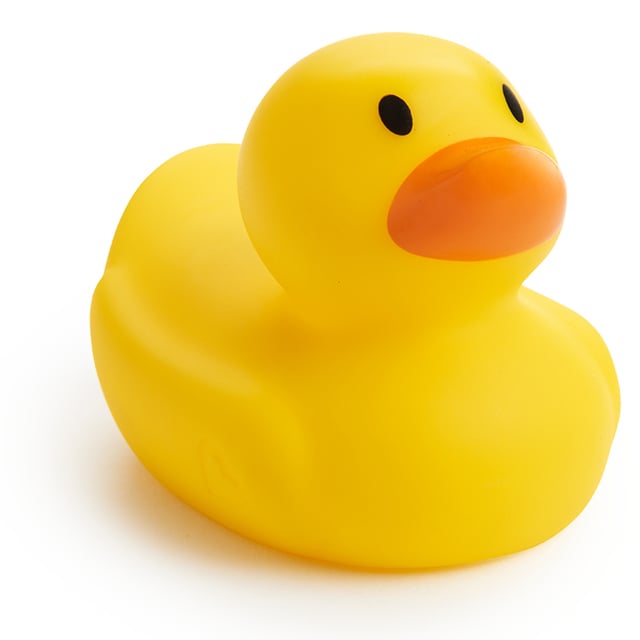I read a lot of people saying that I should leave spotify for local files, or Apple music, só i Sant to go witb the Apple music route, but I havê to convincente my family members, what are tour best argumenta?
(They think the switch will ne to hard, and therefore it isnt worth it)
From what I know:
- They pay artists more (although still too little)
- Lossless audio
- If you’re already embedded into an apple ecosystem, it works well with it
I do feel i need to mention 2 things:
-
Tidal pays artists way more than spotify or apple music. source
-
Tidal offers more in terms of audio quality as well. Admittedly, while most of their catalogue maxes out at CD quality FLACs (16-bit, 44.1 khz), they offer up to 24-bit, 192 khz FLACs.
I will, however add that, in my country, Romania, there is no tidal for free, and there is no tidal plus/hi-fi. There is one subscription, named TIDAL, that covers all of the features, at the same price of 24 RON, equivalent to around 6 USD. However, paying from the app, instead of the website, Google takes a cut and the price is higher, so subscribe from the website.
As for the Apple ecosystem, I cannot comment on that, because I don’t use an apple device.
I always chased the platform with the best audio quality and was disappointed with Tidal. I used Deezer before switching to Apple Music.
The only annoying thing about Apple Music is Spatial Audio is compressed and sounds bad, but it’s easy enough to switch off.
I think it highly depends which artists you listen to too.
In Romania, they are removing mqa content making everything flacs, which in my opinion is good*, as mqa is lossy compression, labeled as “max”. I don’t know about the rest of the world, but it might help you.
I have not seen any artists on spotify that weren’t on tidal. I do not know about the experience on other music services.
*Quick rant. Mqa cannot be played on browsers, and as such, some of my favorite albums could only be played at CD quality on my desktop computer (running linux). For this reason, I consider this change a good one.
I’m glad they’re choosing to remove MQA (at least there), that was specifically something I didn’t like.
I have some ethics issues with how Tidal pushed MQA snake oil for years, charging more for less. Outright deceptive advertising for nothing but the money. I have bigger ethics issues with Spotify funding Rogan though.
Now, Apple is obviously its own titan and almost inherently harmful, but the music department does less active evil than the others. Qobuz seems fine in general so it’s the one I’d rec
-
I recently swapped from apple to android and honestly the apple music app works better on android than it did on my iPhone
Apple Music lets you use iTunes music as well. Pay for a song, own it forever. The only other real option like this is Qobuz, which is what I use.
iTunes tracks were (are?) released in poor quality though. Unfortunately most of the time it sounds better to just stream from Apple Music rather than deal with the terrible 128k AAC or whatever it was they used.
Unrelated, but I don’t get the hype over lossless audio. I have excellently tuned Sennheiser hd600s and I cannot tell the difference. Sometimes I’ll barely be able to tell at high frequencies, like hi hats, but that’s it. No difference in bass or treble. I’ve done a lot of testing on different devices, speakers, other headphones and IEMS, with different EQ settings, I and everyone else I ask cannot tell.
They hype is mostly marketing. Like you’ve noticed the highs do tend to suffer the most from compressed audio.
The only times it vary noticeable to the average person is when you’re playing back on studio speakers in a treated space, or a large system such as a stage or theater. Other then that, unless you’re paying attention on nice headphones, the difference will be negligible.
There is merit in wanting the lossless file so you can compress it properly/how you like.
For Tidal, I just looked at the site
Here’s their tiers of sound quality.
Max
(Up to 24-bit, 192 kHz)
[…] best […] sound quality […] HiRes Free Lossless Audio Codec (HiRes FLAC). Best […] on 5G or WiFi with a hardware connection.
High
(Up to 16-bit, 44.1 kHz)
[…] over 110M songs in studio quality with FLAC. As an open source format […]
Low
(Up to 320 kbps)
[…] without worrying about data. Useful when you have a weak signal, are reaching your data cap, or are running out of download space.
So the low teir is actually compressed, 320kbps is a good number to see for a quality compression (assuming it started off as a quality lossless file). This will work great for headphones, phone speakers, anything Bluetooth etc)
The high teir that claims studio quality is bull-shit. Maybe 30 years ago, but 16-bit 41.1khz is just CD quality. It’ll be perfectly fine on 99% of “nice” consumer devices ($100+ headphones, bookshelf speakers, stage speakers you hooked up in your garage, etc.)
The max teir at 24, 192khz is complete overkill. 192khz is really only usesfull in a studio, but not for listening - super oversimplification: the additional data “overhead” can help made the end product sound better at 48khz.
I could see a max teir at 24bit, 48khz being useful to someone with a home theater or commercial setting with a large system where quality actually matters. In those cases, the quality difference will be noticible between 16 and 24.
Honestly? It’s mostly bullshit, you won’t be able to notice much of a difference at all unless you’re using very high-end headphones plus an amplifier at the very minimum. The reality is most (if not all) consumer grade audio devices can’t reproduce the fine details in lossless files without some sort of audiophile setup and even then they’re so discrete you usually need a trained ear to notice them, so basically most people are paying for a placebo while they’d be better served with lossy formats like good old mp3.
I don’t want to be elitist but I don’t understand how people don’t notice. Put on some regular headphones and it’ll become immediately obvious, or listen to someone stream music in low quality loud in their car. It tends to give me a headache pretty quick because it sounds like a high pitched reverberating tunnel more than it does music.
I know I’m some stranger on the internet and this probably just sounds like more hype but it honestly drives me crazy.
You might be confusing different mp3 rates. I absolutely notice anything under 250 kbps, but above that, especially 320kpbs MP3 is near indistinguishable to flac.
320 kbps is definitely noticeable to me. I’ve experimented with converting lossless FLAC ripped from CD to various lossy formats.
I haven’t used Spotify in years but back then I was getting annoyed at their recommendations/generated playlists. Instead of new music I liked they just create 4 playlists of music I already have in my own playlists or music I don’t like at all and not even similar to music I listen to. I tried Apple Music for free because of a device purchase and their generated playlists actually gave me new music that I liked. Haven’t looked back since
Better audio quality and they pay the artists better if I recall correctly
I just switched from Spotify to Tidal, and am enjoying lossless audio. We’ll see if I stay or go here.
It’s fun to try a new algorithm, too. I used SongShift to transfer my tracks and playlists (have been using that app for 5 years or so now).
From what I know: Apple Music has the Cloud Music Library so any of your own music you want to add you can access across devices, Lossless audio, and pays Musicians better. If those are things that you’re interested in or would benefit from at all then I would suggest switching over, if not you probably won’t see much of a difference
I’m not sure this is still the case, but I enjoyed Apple Music way more than I did Spotify. I discovered more related artists I liked and thought the UI was better, used more of the features etc. I only use Spotify now because I can share a family account and pay less because of that and I also don’t have a Mac or iPhone anymore so the apps are kinda bad (at least were bad when I last tried them, several years ago).
Maybe because they have lossless audio.
For a student I think they might be cheaper.
I am going to do a bit of transitive properties here. - Talking about family = family plan to me.
So for both services we are talking 6 devices streaming their own accounts for $20 a month.
At the point in our argument there is no huge difference between the two to be honest. Same price for the same services for Music. They both provide good audio and playlist function. (lossless audio on normal speakers and car speakers doesn’t do much unless we are talking about $$$ cars/home audio and at that point this conversation isn’t happening)
The big difference for me is that we have apple mobile devices. (I tried Android some time ago but didn’t like that each company had their own skin and updates depended on how each company felt at the time. The nexus I had was great and was straight from google no extra crap but even that had a 2-3 year span though so no different than Apple for me at the time)
With Apple one (6 devices for apple music), every family member gets Apple TV+, Apple Music, and Apple arcade. For me this put it over the fence. Kids get more games I don’t have to pay for and we get an extra streaming service I don’t have to pay extra for won it for me.
Essentially extra value won it for me. Not just the music service.
Maybe dumb question, but how is it even noticeable? I listen to music in the car and in $100 earphones and usually just ask phone’s assistant to play shit based on my mood. I honestly can’t even tell which service it chooses between Amazon Music, Apple Music or Spotify. What’s the difference exactly?
If you or your family care about privacy, their Android app has fewer trackers (see Spotify v. Apple Music).
deleted by creator
Good luck! I tried this and failed.
- I wanted to leave Spotify when it gave Joe Rogan a platform. Also, increased advertising of effing podcasts when I’m trying to find music
- tried Apple Music but my family was not ok with it, and I was never able to get back to a point of reliably finding good music
- nothing else is as available on as many types of devices.
It’s not worth it imo unless you’re doing a bundle with other Apple services (coming from someone who did switch).
If you do decide to switch, there’s software that will transfer your playlists over but if you use folders in Spotify they are not there in Apple Music which can be annoying when you have a ton of playlists.
I wish a knowledgable person would break down the pros and cons of the various streaming platforms. I use YouTube Music because Spotify has basically destroyed podcasts and gives Joe Rogan a platform, I tried Apple Music but its classical selection is totally different from the others and I didn’t have the things I had come to expect, and I still dislike YouTube. Google Play Music was literally perfect to me but nothing else is like it.










